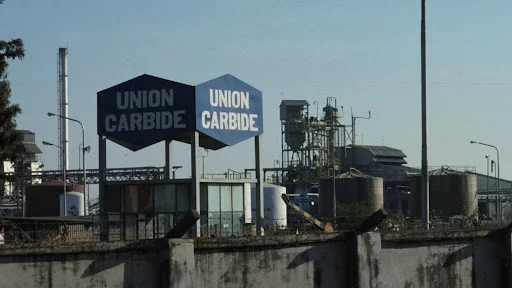Background
The UCIL pesticide plant was established in 1969 as a joint venture between Union Carbide Corporation (UCC) of the United States, which owned 50.9 percent of the shares, and Indian government-controlled banks and the Indian public, which owned 49.1 percent. The plant produced pesticides such as Sevin and Temik, which were used by Indian farmers to increase crop yields. The plant also stored large quantities of MIC, an intermediate chemical used in the production of Sevin.
The plant was located in a densely populated area of Bhopal, a city of about 900,000 people at the time. The plant was surrounded by slums and shanty towns, where many of the workers and their families lived. The plant employed about 1,000 workers, most of whom were poorly trained and paid. The plant also had a history of safety and environmental violations, such as leaks, spills, fires, and accidents. The plant management was aware of these issues but failed to take adequate measures to prevent them or to inform the workers and the public about the risks involved.
The Disaster
On the night of 2-3 December 1984, a series of events led to the catastrophic release of MIC gas from the plant. The exact cause of the disaster is still disputed between corporate negligence or employee sabotage. According to one version, a large amount of water entered one of the storage tanks (E610) containing about 42 tons of MIC through a faulty valve. This caused a chemical reaction that increased the temperature and pressure inside the tank. The safety systems that were supposed to prevent such a scenario were either malfunctioning or turned off. The tank vented its contents into the atmosphere through a flare tower that was not lit.
According to another version, a disgruntled employee deliberately introduced water into the tank to sabotage the plant operations. This was allegedly done as an act of revenge for being denied a promotion or a raise. However, this theory has not been conclusively proven or accepted by all parties involved.
Regardless of the cause, the result was devastating. A huge cloud of MIC gas escaped from the plant and drifted over Bhopal. The gas was colorless but had a pungent smell that resembled garlic or rotten onions. The gas was also heavier than air and stayed close to the ground level. The gas affected people’s eyes, lungs, skin, and nervous system. People experienced symptoms such as burning eyes, coughing, choking, vomiting, diarrhea, convulsions, coma, and death. Many people died in their sleep or while trying to escape from their homes. Others died on the streets or in hospitals that were overwhelmed by the influx of patients.
The exact number of deaths caused by the disaster is unknown and disputed. According to official figures, 2,259 people died within three days of exposure to MIC gas. However, other sources estimate that 8,000 people died within two weeks and another 8,000 or more have since died from gas-related diseases. According to government data from 2008
The Aftermath
The Bhopal disaster had far-reaching and long-lasting consequences for the survivors, the environment, and the society. The survivors suffered from various physical and mental health problems, such as respiratory disorders, eye damage, neurological impairment, reproductive issues, birth defects, cancer, and psychological trauma. Many survivors also faced social and economic hardships, such as loss of income, discrimination, stigma, and lack of access to adequate health care and education.
The environment was also severely affected by the disaster. The MIC gas and other chemicals from the plant contaminated the soil and water sources in and around Bhopal. The contamination posed a serious threat to the health and livelihoods of people who depended on agriculture, fishing, and livestock. The contamination also harmed the flora and fauna of the region, causing loss of biodiversity and ecological imbalance.
The disaster also had significant political and legal implications. The disaster sparked public outrage and protests against UCC, UCIL, and the Indian government for their negligence and indifference. The disaster also raised questions about the accountability and responsibility of multinational corporations, the regulation and oversight of hazardous industries, the protection of human rights and environmental justice, and the compensation and rehabilitation of victims.
The disaster led to several legal actions and settlements between various parties involved. In 1985, the Indian government enacted the Bhopal Gas Leak Disaster Act, which gave it the exclusive right to represent the victims in any legal proceedings. In 1989, UCC agreed to pay $470 million to settle all claims arising from the disaster. However, many victims and activists considered this amount to be inadequate and unfair. In 1994, UCC sold its stake in UCIL to Eveready Industries India Limited (EIIL), which later merged with McLeod Russel (India) Ltd. In 1998, EIIL ended its clean-up operations on the site and handed it over to the state government of Madhya Pradesh.
In 2001, Dow Chemical Company acquired UCC. Dow claimed that it had no liability or responsibility for the Bhopal disaster or its aftermath. However, many victims and activists demanded that Dow should pay for the clean-up of the site and provide more compensation to the survivors. In 2004, the Indian Supreme Court ordered the state government to provide clean drinking water to the residents of Bhopal because of groundwater contamination.
In 2010, a Bhopal court convicted seven former UCIL employees, including Keshub Mahindra, the former chairman of UCIL, of causing death by negligence. They were sentenced to two years imprisonment and a fine of about $2,000 each. However, many victims and activists considered this verdict to be too lenient and delayed. They also demanded that Warren Anderson, the former CEO of UCC who died in 2014, should be extradited from the US and tried in India.
The Lessons
The Bhopal disaster is a tragic example of how industrial negligence and human greed can cause immense suffering and injustice. The disaster also teaches us some important lessons that are relevant for today’s world.
- Corporations should be held accountable for their actions and impacts on people and the environment. They should follow ethical principles and adhere to safety standards and regulations.
- Governments should protect the rights and interests of their citizens and ensure that they have access to basic services such as health care, education, and justice. They should also monitor and regulate hazardous industries and enforce strict penalties for violations.
- People should be aware of their rights and responsibilities as consumers, workers, and citizens. They should also participate in decision-making processes that affect their lives and well-being.
- Communities should stand together in solidarity and support each other in times of crisis. They should also demand justice and dignity for themselves and others who are affected by disasters.
- Society should learn from its mistakes and prevent them from happening again. It should also promote a culture of compassion
The Bhopal disaster was a horrific event that exposed the dark side of industrialization and globalization. It also revealed the vulnerability and resilience of human beings in the face of adversity. The disaster left behind a legacy of pain and struggle, but also of hope and courage. The survivors of the disaster have not given up on their fight for justice and dignity. They have also inspired many others to join their cause and to raise awareness about the issues of corporate accountability, environmental justice, and human rights. The Bhopal disaster is not just a tragedy of the past, but a lesson for the present and the future. It reminds us that we have a moral obligation to prevent such disasters from happening again and to ensure that the victims are not forgotten or ignored. It also challenges us to create a more humane and sustainable world for ourselves and for generations to come.
These are some images that may disturb you upon viewing.




















